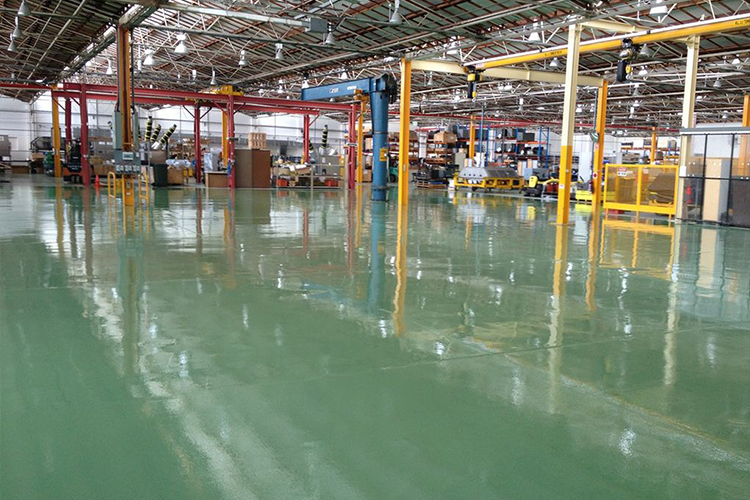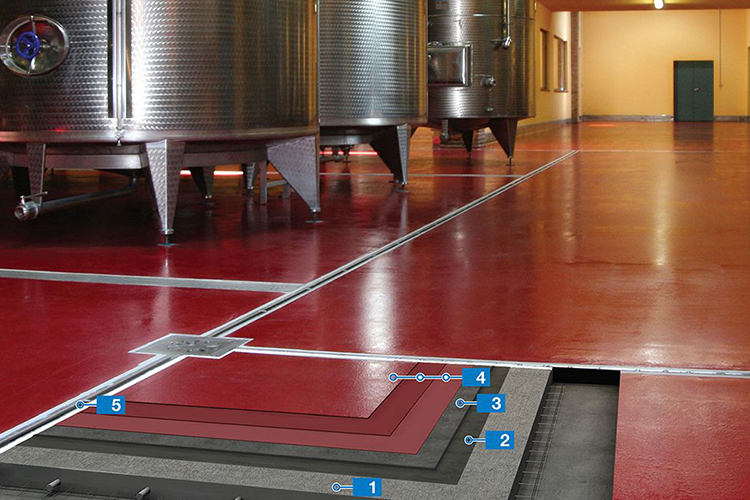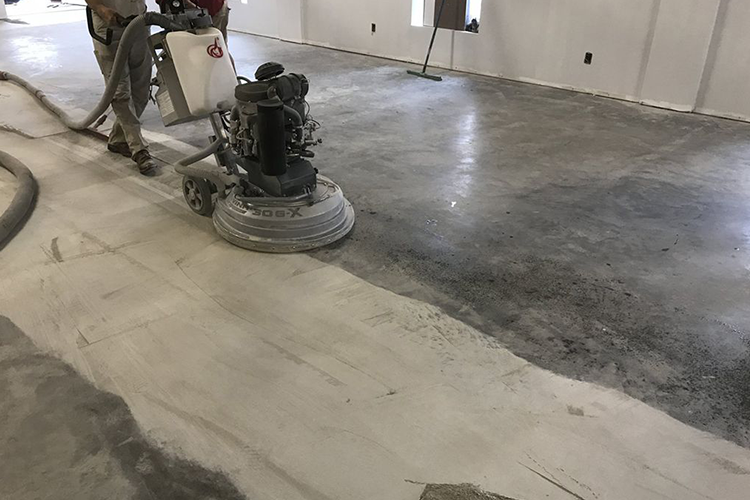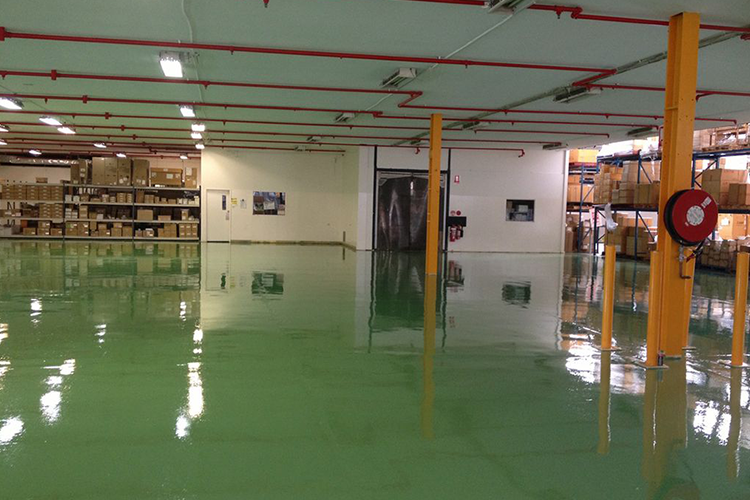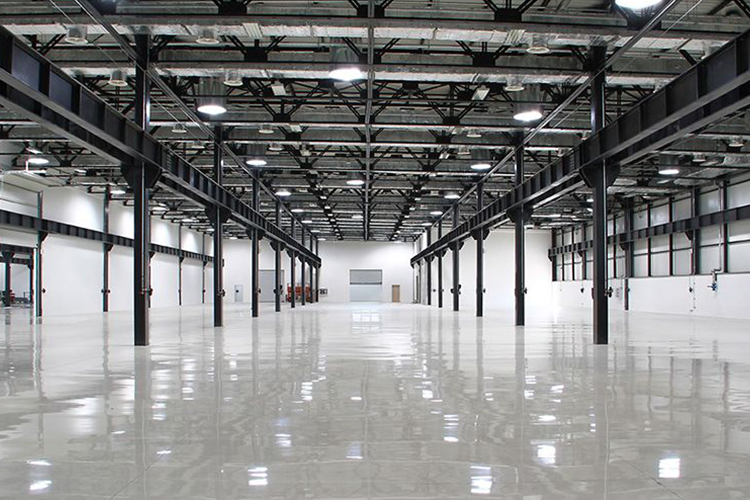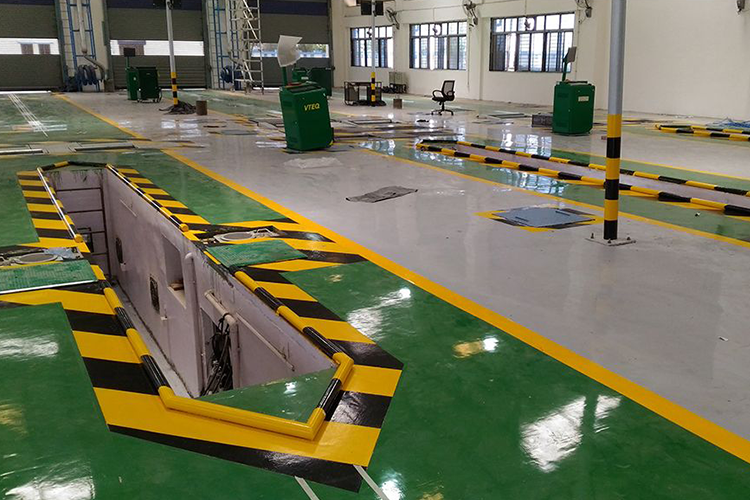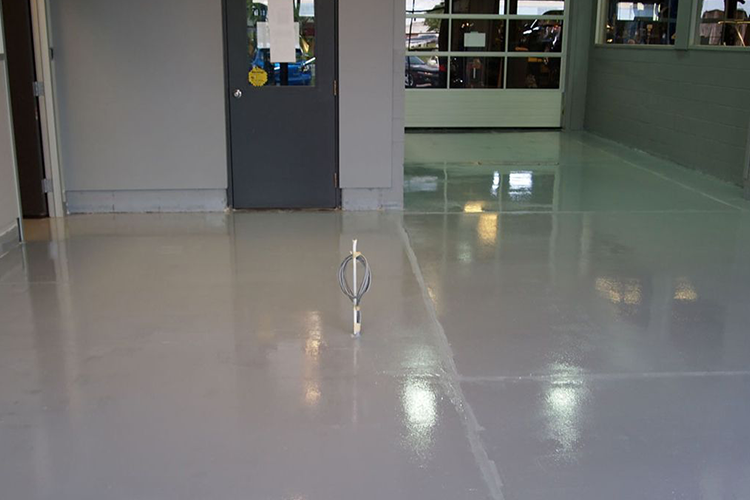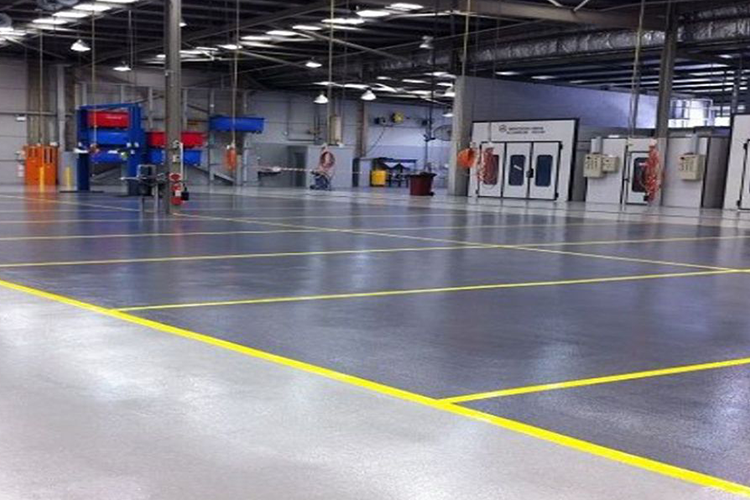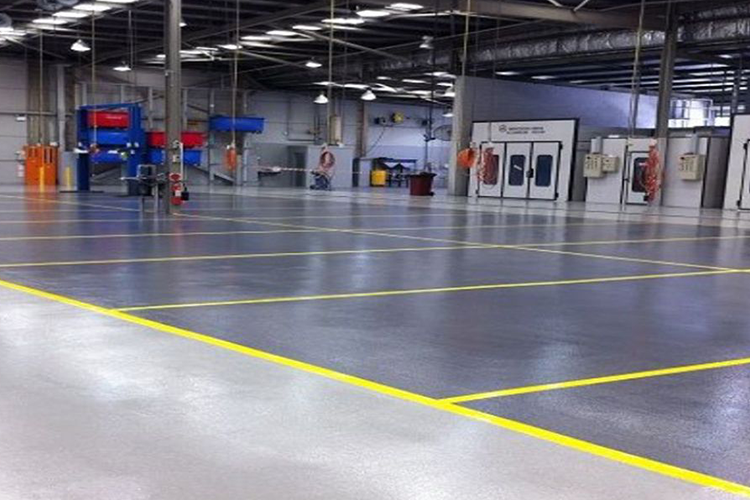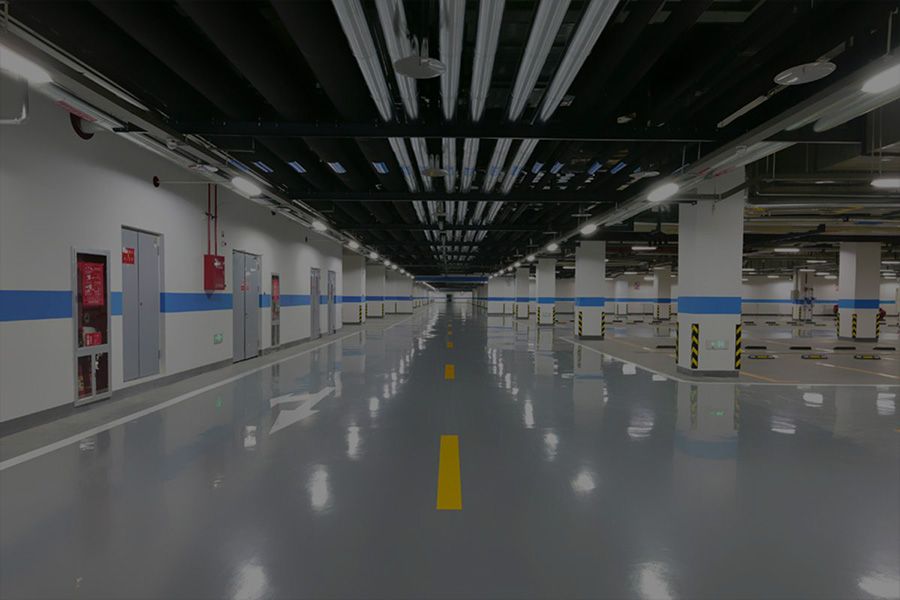
Epoxy Floor Applications
Epoxy is a resin belonging to thermosets. It has a strong resistance towards water, acids and alkaline. It preserves its features over time.
Epoxy system is made up of epoxy resin and a curing agent. The monomers in the epoxy floor plating resin combine with the hardener and creates polymers.
Epoxy, which usually has two components, changes its state from fluid to solid after some time just like other thermoset plastics, and starts drying in the following 24 hours (becomes hard enough to step on), reaching the final hardness in 7 days.
What is epoxy and where can it be applied?
That the structures are durable against outer impact has been the biggest discussion and research topic of the field of construction. Epoxy floor plating is the group of technological construction materials that can be used in all types of land and sea to protect structure floors against the detrimental impacts of nature (wind, storm, wave, thermal changes, freezing, dissolution, contamination, chemical reactions etc.) and industry (mechanical, physical and chemical) by covering them with aesthetic materials. As an addition to these, there are some epoxy materials that are used for attaching different construction materials together as a result of its being adhesive and mechanical & physical durability.
The areas of usage can be listed as this based on the application style and product choice:
In the adhesion of rebar and iron; in the adhesion of stone, steel, aluminum and even wood. In reinforced concrete, to produce anchoring iron. As a thin plating material on concrete, metal, ceramic, polyester and epoxy grounds in structural connection and restoration.
In the montage of prefabricated concrete and columns, in the repair of cracks and fractures. As a plating for surface protection. As an adhesive resin to combine fresh concrete with old, hardened concrete or concrete grout. As a protective covering surface against abrasion. For unproblematic ground and toughness in the manufactures of bridge-holder slabs, machine bases, mounting bolts and train railroad routes.
To strengthen the wooden, masonry and reinforced concrete constructions in the cases of damage, wearing, change in the structure, design and production errors and an increase in the load. As a joint filler that is stiff, waterproof and resistant to chemicals in the filling of floor or ceramic wall tiles that are exposed to chemical and mechanic impacts: in pools, laundries, hospitals and laboratories. As a floor and wall paint with high strength. In underwater manufactures. It can be used for bonding the fractures and dents by filling or injecting in the structures.
The most common epoxy group is the one that is used as a floor covering.
The common features of epoxy floor covering applications can be listed as:
- Resistant to chemicals
- Creates a durable surface against friction and abrasion.
- Has a wide range of color for decorative applications.
- Can easily be cleaned, hygienic. A nonslip surface can be achieved with the addition of aggregate.
- Resistant to oil and chemicals.
- Aesthetic
- Solvent-free
In general, epoxy is the range of products that are used for the creation of a particular covering for protection in concrete floors, maintenance or decorative purposes. Therefore, it receives a growing demand in the manufacture of floors that are not bad for human health both in the application process and after, durable, decorative, hygienic, resistant to chemical and physical impact. The need of using more scientific and technological procedures in the field of construction caused the products that are produced and applied with the help of expert scientific & technical crews to emerge and become widespread. As a result, the product range of epoxy is among the modern construction materials that will be more prevalently used and preferred in the upcoming future.
